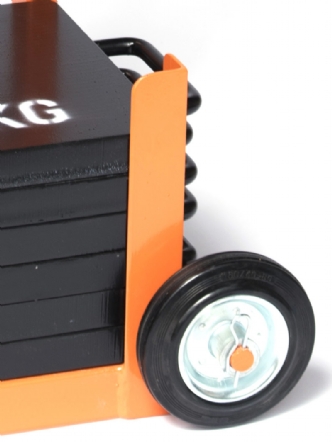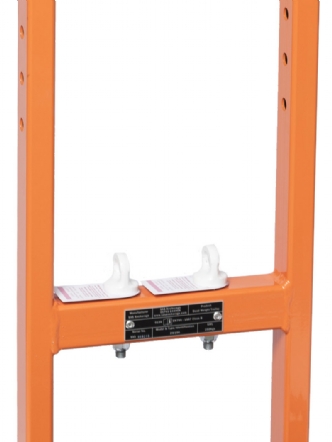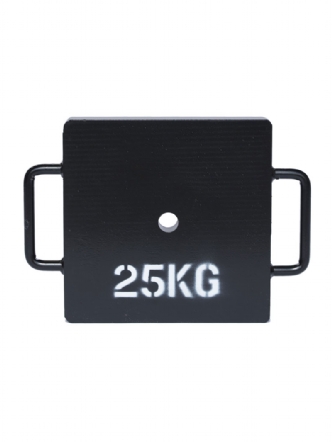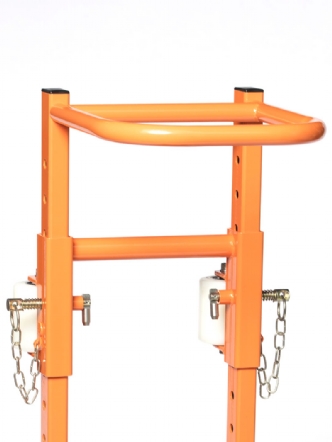The SAS deadweight trolley anchor is a portable anchor device intended for use in industrial rope access and fall arrest. If there are no appropriate anchor points on a roof, the deadweight trolley anchor can be used. It is designed for use against a parapet wall but you can also use it against structural handrails / balustrades. It’s important to realise that it works by the amount of friction it exerts on the surface that it’s used on. With this in mind, the roof slope should be no more than 5 degrees downward slope from horizontal in order to avoid movement. Where possible, deadweight anchors should be backed-up.
Deadweight Trolley Anchor – Advantages
- Easy to assemble
- Can be moved sideways when fully loaded
- No damage to surfaces or building structure
- Doesn’t require permanently installed anchor points
Deadweight Trolley Anchor – Specification
- Orange powder coated mild steel frame
- 2x white coated galvenised steel eye-bolts
- 6x 25 kg weight plates, with 2 handles
- Threaded weight retaining safety pin
- Working Load Limit: 250 kg
- 2-person rescue capacity
- Life span: 10 years
- Minimum recommended upstand: 600 mm (tested down to 450 mm)
- Total weight: 178 kg
- Height: 1410 mm
- Length: 570 mm
- Width: 540 mm
- Individually serial numbered
Deadweight Trolley Anchor – Certification
- EN 795:2012 – type E
- Designed in accordance with BS 7883:2005 – Code of practice for the design, selection, installation, use and maintenance of anchor devices conforming to BS EN 795
- Meets IRATA ICoP minimum recommended static strength of 15 kN
- Meets the requirements of PD CEN/TS 16415:2013 for 2-person rescue
- Conforms to the manual handling lifting and lowering guidelines (maximum component part 25 kg)
Limitations
Friction, and therefore effectiveness, can be reduced in a number of ways:
- Using less than the recommended number of weight plates (all 6 must be correctly used at all times)
- The type of roof finish. For example, gravel ballast, concrete pavers, green roof, membrane etc.
- Surface water
- Icy conditions
- Excessive roof slope
- Moss / Lichen or other contaminants on the roof
https://www.abaris.co.uk/prod/anchors/Abaris-Deadweight-Trolley.htm





